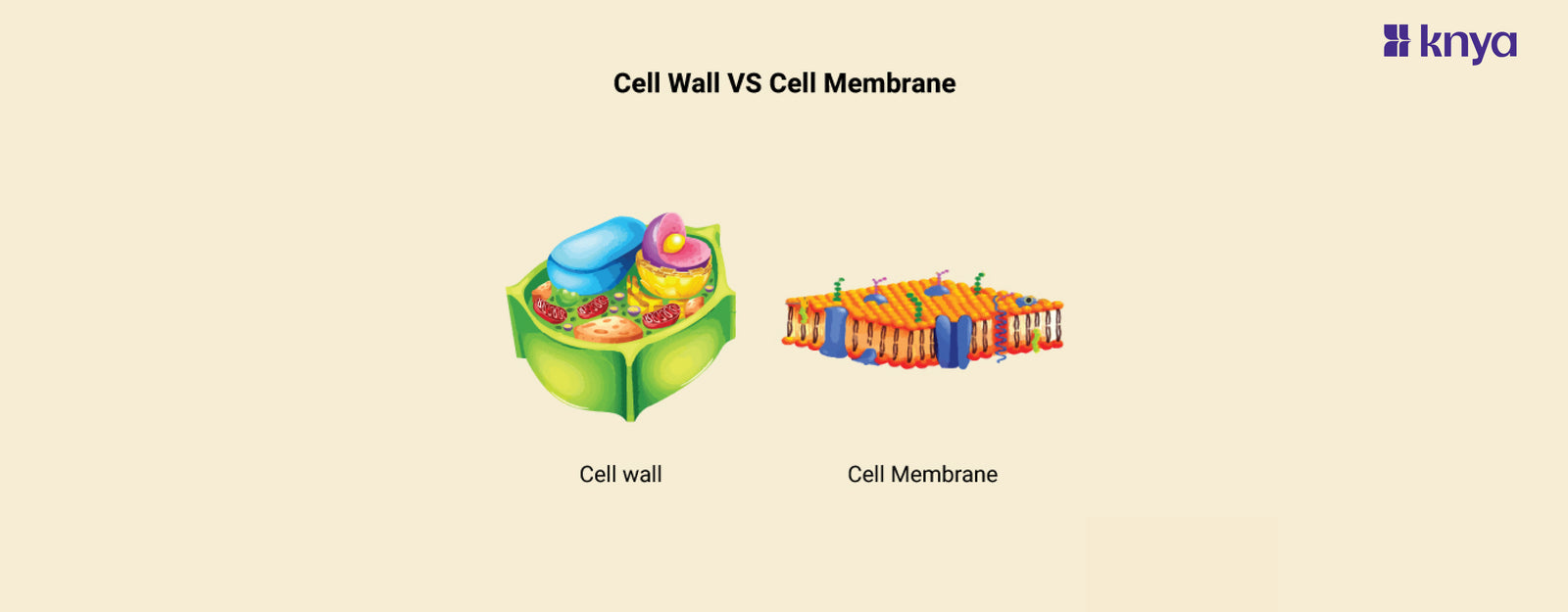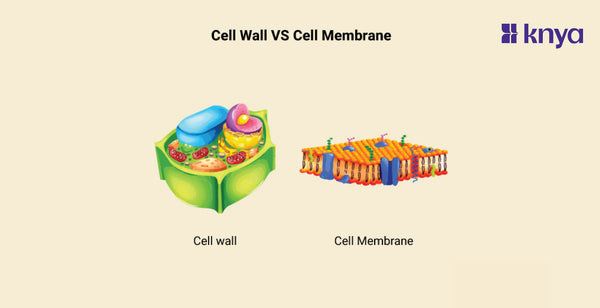Difference between Cell wall and Cell membrane: While both residing outside the cell, the cell wall and cell membrane play distinct roles. The cell wall, found in plants, fungi, and some bacteria, is a rigid outer shell made of cellulose or other polysaccharides, providing structural support and protection from mechanical stress. In contrast, the cell membrane, present in all living cells, is a flexible, semi-permeable barrier composed of phospholipids and proteins. It controls what enters and exits the cell, facilitates communication with other cells, and maintains a stable internal environment. Think of the cell wall as a sturdy castle wall, and the cell membrane as a dynamic gatekeeper that regulates traffic within the kingdom.
[image_banner]
Difference between Cell Wall and Cell Membrane
Both the cell wall and cell membrane are crucial barriers protecting and regulating what enters and exits a cell. While often confused, they have distinct features Let's fall into the difference between Cell Wall and Cell Membrane:
|
Feature |
Cell Wall |
Cell Membrane |
|
Composition |
Primarily cellulose, chitin, or peptidoglycan |
Lipids (phospholipids), proteins, and carbohydrates |
|
Location |
Outside the cell membrane |
Inside the cell wall in plants; present in all cell types |
|
Permeability |
Generally porous, less precise regulation |
Selectively permeable, precise regulation |
|
Function |
Structural support, shape determination |
Regulates entry and exit of substances, involved in signaling |
|
Flexibility |
Relatively rigid and inflexible |
Flexible and dynamic |
|
Found in |
Plants, fungi, bacteria, some archaea |
All living cells, including plants, animals, fungi, bacteria |
|
Primary Component |
Cellulose, chitin, peptidoglycan |
Lipids, especially phospholipids |
|
Nature |
Dead at maturity (in plant cells), alive in bacteria, fungi |
Always alive and active |
|
Synthesis |
Produced during growth |
Continuously synthesized by the cell |
|
Selective Permeability |
Not selectively permeable |
Selectively permeable, allowing specific molecules |
What is Cell Wall?
Imagine a castle's protective outer wall, but on a cellular level - that's the cell wall. It's a rigid layer surrounding plant, fungi, and some bacteria cells, made of tough materials like cellulose for plants. It provides structural support, protects against environmental stress, and helps maintain the cell's shape. Think of it as a sturdy barrier keeping the inner workings safe.
Key Features of Cell Wall:
- Rigid Armour: Unlike the flexible cell membrane, the cell wall is a rigid outer layer, providing structural support and shape to the cell. Think of it as a sturdy castle wall surrounding the cell.
- Plant-Exclusive: Only plant cells, bacteria, fungi, and some algae have cell walls. Animal cells lack this rigid structure, relying solely on the cell membrane.
- Composition Variety: Cell walls vary in composition depending on the organism. Plants typically have cellulose walls, while bacteria have peptidoglycan walls. Fungi have walls made of chitin, same as insect exoskeletons.
- Selective Permeability: Cell walls are generally less selective than cell membranes, allowing some molecules like water and small ions to pass through smoothly. However, they can still work as the barrier against large molecules and pathogens.
[image_banner]
What is Cell Membrane?
Every living cell has a cell membrane, also called the plasma membrane. This flexible, semipermeable barrier acts like a bouncer at a club, carefully controlling what enters and exits the cell. Made of phospholipids and proteins, it allows essential nutrients and water in while keeping harmful substances out. It also plays a crucial role in communication, sending and receiving signals that regulate cell functions. So, the cell membrane ensures the right balance of traffic for a healthy cell.
Key Features of Cell Membrane:
- Flexible Gatekeeper: The cell membrane is a thin, flexible barrier made of phospholipids and proteins. It controls the movement of molecules in and out of the cell, acting as a selective gatekeeper.
- Universal Presence: All living cells, from bacteria to humans, have a cell membrane. It's the fundamental barrier separating the internal workings of the cell from the external environment.
- Phospholipid Bilayer: The main building block of the cell membrane is a phospholipid bilayer. Imagine two layers of fat molecules sandwiched together with their heads facing outwards and tails facing inwards, creating a semi-permeable barrier.
- Protein Powerhouse: Embedded in the phospholipid bilayer are various proteins that serve specific functions. Some act as channels for specific molecules, while others act as receptors, sending signals to the cell interior.
Shop Best Lab Coats from Here!
Similarities between Cell Wall and Cell Membrane
- Boundary: Both structures act as boundaries that separate the interior of the cell from the external environment.
- Present in Cells: Found in all types of cells, though the presence of a cell wall varies among different organisms.
- Structural Support: Both contribute to the structural integrity of the cell.
- Protection: They provide protection to the cell against external stresses and pathogens.
- Biological Importance: Crucial for the overall functioning and survival of the cell.
Often confused as one and the same, the cell wall and cell membrane play distinct roles in protecting and routinizing the inner functions of a cell. While both forming an outer barrier, their composition, location, and permeability create key differences. Unlike the living, selectively permeable cell membrane, the cell wall is a non-living, rigid structure composed mainly of cellulose in plants, offering sturdy support and protection from mechanical stress. Located outside the cell membrane, the wall provides additional defence against pathogens and harsh environments. Conversely, the flexible cell membrane, found in all living organisms, is a phospholipid bilayer embedded with proteins. This dynamic structure acts as a gatekeeper, controlling the flow of molecules and ions in and out of the cell. Its selective permeability allows vital nutrients and signalling molecules to pass through, while keeping harmful substances at bay. In essence, the cell wall provides a sturdy outer shell, while the cell membrane acts as a discerning gatekeeper, safeguarding the delicate balance within the cell.
| Check out More Articles | |
| Difference Between Psychosis and Neurosis | |
| Dorsal Vs Ventral | |
| Difference Between Striated and Unstriated Muscles | |















